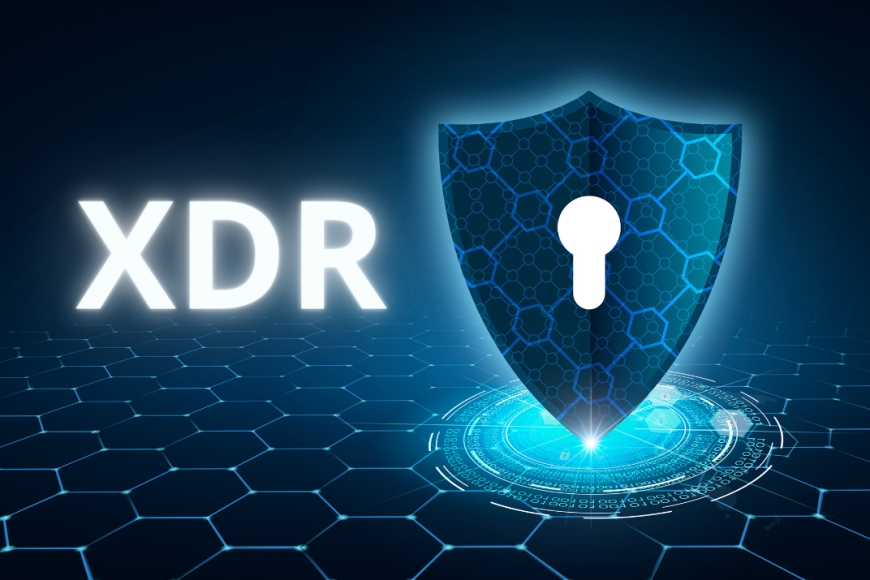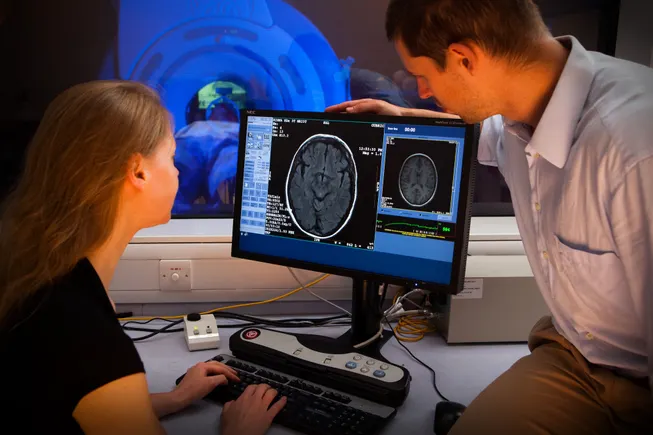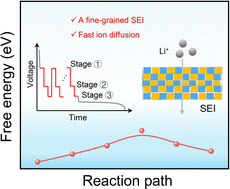How Quantum Computing Could Impact XDR
Extended Detection and Response (XDR) is an integrated cybersecurity approach that unifies multiple security products—such as endpoint, network, cloud, and identity protection—into a cohesive platform.

The cybersecurity landscape is evolving at an unprecedented pace. As organizations embrace Extended Detection and Response (XDR) solutions to counter increasingly sophisticated threats, a new technological revolution is on the horizon—quantum computing. While still in its nascent stage, quantum computing poses both a challenge and an opportunity for the future of XDR.
In this blog post, we explore how quantum computing could impact XDR, what threats it introduces, the benefits it could bring, and how organizations can start preparing for this new era.
Understanding XDR and Quantum Computing
What is XDR?
Extended Detection and Response (XDR) is an integrated cybersecurity approach that unifies multiple security products—such as endpoint, network, cloud, and identity protection—into a cohesive platform. It enhances visibility, speeds up threat detection, and automates response across different attack surfaces.
Key features of XDR:
-
Cross-layered detection and correlation
-
Real-time threat response
-
Centralized security analytics
-
Automation and orchestration
What is Quantum Computing?
Quantum computing uses principles of quantum mechanics to process information in fundamentally different ways than classical computers. Instead of using binary bits (0s and 1s), quantum computers use qubits, which can represent multiple states simultaneously due to superposition and entanglement.
Potential capabilities of quantum computers include:
-
Solving complex problems much faster
-
Breaking cryptographic algorithms
-
Enhancing AI and machine learning
-
Performing massive parallel computations
The Double-Edged Sword: Quantum Threats to XDR
While quantum computing offers incredible potential, it also introduces significant risks to cybersecurity platforms like XDR. Let’s look at some of the core threats:
1. Quantum-Cracking of Encryption
The most immediate concern is the ability of quantum computers to break modern cryptography. Algorithms like RSA, ECC, and even symmetric encryption standards could become vulnerable once quantum machines reach a sufficient number of qubits.
-
RSA encryption, commonly used in secure communications and XDR telemetry, can be broken using Shor’s Algorithm.
-
TLS/SSL protocols used in securing communications between XDR components could also be compromised.
-
Digital signatures, essential for software validation and threat intelligence sharing, may become untrustworthy.
For XDR platforms, this could mean:
-
Secure data in transit and at rest could be decrypted.
-
Secure agent-server communications might be intercepted or spoofed.
-
Threat actors could forge logs or alerts.
2. Faster Malware Obfuscation and Evasion
Quantum-powered attackers might use enhanced AI models and optimization algorithms to:
-
Create highly polymorphic malware that adapts in real-time
-
Evade behavioral analysis engines in XDR
-
Overwhelm machine learning models with adversarial inputs
This would raise the bar for anomaly detection and require XDR solutions to adopt quantum-resilient AI models.
3. Spoofing and Tampering in Incident Response
Quantum systems may manipulate sensor input data or cryptographic hashes used by XDR. Attackers could use quantum-based algorithms to:
-
Forge alerts
-
Disrupt log integrity
-
Spoof endpoint or network identity
This undermines the trust in the very signals XDR relies on to detect and respond to threats.
Quantum Opportunities for XDR
Despite the threats, quantum computing could also bring major benefits to the evolution of XDR platforms:
1. Quantum-Enhanced Threat Detection
Quantum machine learning (QML) can process massive datasets and complex patterns much faster than classical models. For XDR, this means:
-
Enhanced anomaly detection from telemetry across endpoints, networks, cloud, and users
-
Real-time classification of threats with better precision
-
Ability to process more threat indicators without latency
This could result in a dramatic reduction in false positives and faster detection of zero-day threats.
2. Accelerated Threat Hunting
Quantum computers can search through vast datasets exponentially faster than classical machines. Applied to threat hunting:
-
XDR platforms could analyze years of log data in seconds
-
Hidden attack paths or dwell times could be identified more quickly
-
Security teams could explore multiple hypotheses in parallel
This allows proactive threat hunting rather than reactive alert chasing.
3. Post-Quantum Cryptography Integration
While quantum computers threaten current encryption methods, they also drive innovation in post-quantum cryptography (PQC). XDR vendors can integrate quantum-resistant algorithms into:
-
Agent-to-platform communications
-
API interactions
-
Data encryption at rest and in transit
Early adoption of PQC in XDR platforms would offer quantum-safe security in the future.
Preparing XDR for the Quantum Future
Though mainstream quantum computing may still be 5–10 years away, the time to prepare is now. Here’s how XDR vendors and enterprises can begin adapting:
1. Inventory Cryptographic Dependencies
Start by identifying where traditional cryptography is used in the XDR platform:
-
Agent-server communication
-
Data pipelines and storage
-
API encryption
-
License validation and digital signatures
This helps prioritize areas for post-quantum transition.
2. Adopt Crypto-Agile Architectures
Crypto-agility means designing systems that can easily switch encryption algorithms as standards evolve. XDR solutions should allow:
-
Modular encryption libraries
-
Easy rollout of new cryptographic protocols
-
Runtime algorithm updates without full system changes
3. Integrate Post-Quantum Algorithms
Work with standards from NIST’s Post-Quantum Cryptography competition and integrate algorithms like:
-
CRYSTALS-Kyber (for encryption)
-
CRYSTALS-Dilithium (for digital signatures)
-
SPHINCS+ or Falcon (for alternative digital signature schemes)
XDR vendors that implement these early will lead the market in quantum readiness.
4. Boost AI with Quantum Simulation
Until full-scale quantum computers are widely available, simulate quantum algorithms using hybrid cloud models to:
-
Test quantum-inspired threat detection
-
Train better AI models
-
Benchmark performance improvements
This prepares the XDR architecture for quantum integration once hardware becomes practical.
5. Educate Security Teams
Security analysts and SOC operators must be educated on:
-
Quantum threat models
-
Changes in threat actor capabilities
-
Indicators of compromise related to quantum-assisted attacks
This training will be essential for operating XDR platforms in a quantum-threatened world.
The Future: Converging Quantum and XDR
As quantum computing evolves, we may see a future where XDR platforms are hybridized with quantum-powered analytics. The convergence could include:
-
Quantum-accelerated correlation engines to process real-time security events from multiple domains.
-
Secure quantum communication channels for transmitting threat intelligence.
-
Quantum AI assistants embedded within SOCs, automating advanced decision-making.
-
Dynamic quantum key exchanges between XDR components, making eavesdropping nearly impossible.
Vendors who embrace this convergence will lead the next generation of cybersecurity.
Conclusion
Quantum computing is poised to be both a disruptor and a catalyst for the cybersecurity industry. For XDR platforms, the challenges are real—especially regarding encryption vulnerabilities and evasion capabilities. However, with the right preparation, quantum computing can also supercharge threat detection, response, and resilience.
Enterprises and XDR vendors alike must begin their quantum readiness journey today. The quantum era isn’t just coming—it’s already shaping the future of cybersecurity.























































































![Four big takeaways to wrap up the Paris Air Show [Video]](https://breakingdefense.com/wp-content/uploads/sites/3/2023/06/FCAS-scaled-e1685718848105.jpg?#)
![The sights of Paris Air Show, one last time: Day 4 [Photos]](https://breakingdefense.com/wp-content/uploads/sites/3/2025/06/20250617-helenedelacoste-Paris-Air-Show-037-scaled-e1750357690820.jpg?#)























































